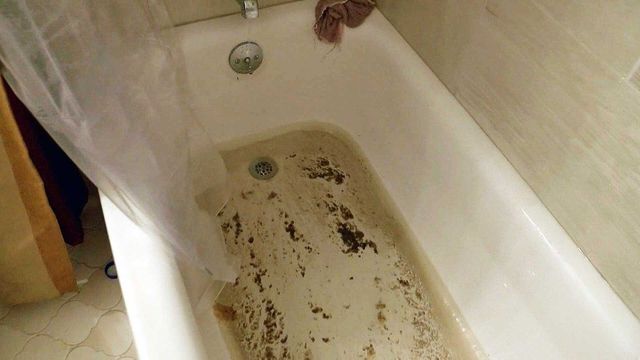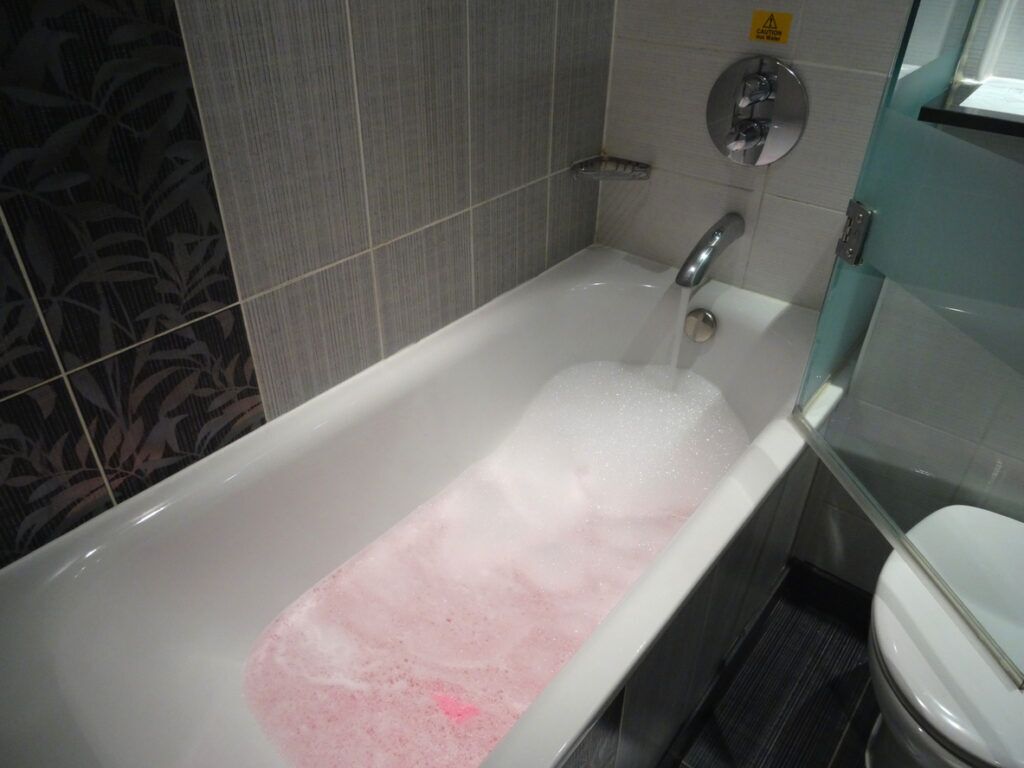Highly-Rated Reasons Behind Sewage Backflow in the Bathtub
Highly-Rated Reasons Behind Sewage Backflow in the Bathtub
Blog Article
What're your thoughts with regards to What To Do If Sewage Starts Backing Up Into the Shower?

Sewage back-up in the tub can be a distressing and unsanitary trouble for any type of homeowner. Not just is it troublesome, but it also presents major wellness dangers and shows underlying concerns with the plumbing system. Understanding why sewer is turning up through the tub is essential for taking proper activity to deal with the trouble efficiently.
Intro to the Problem
Understanding the Issue
When sewer starts backing up into the bath tub, it's a clear indicator of a trouble with the drainage system. The wastewater that must be moving away from your home is rather finding its way back right into your space, which can result in substantial damage and carcinogen.
Possible Reasons
Several aspects can add to sewage backup in the tub. From clogs in the sewer line to issues with the plumbing framework, identifying the root cause is necessary for locating a solution.
Common Factors for Sewer Back-up
Clogs in the Sewer Line
One of one of the most usual sources of sewer back-up is a clog in the sewage system line. This can occur because of the buildup of particles, oil, or foreign objects in the pipelines, avoiding appropriate circulation and creating sewer to support right into your bath tub.
Tree Origin Intrusion
Tree origins looking for dampness and nutrients can penetrate sewer lines through small splits or joints. Over time, these origins can expand and increase, creating substantial damages to the pipes and resulting in sewage backup issues.
Aging Infrastructure
Older homes might have obsoleted plumbing systems that are a lot more prone to rust, fractures, and wear and tear. As pipes age, they come to be extra prone to leakages and obstructions, enhancing the likelihood of sewer backup occurrences.
Heavy Rainfall or Flooding
During durations of heavy rainfall or flooding, the drain system may come to be overwhelmed with excess water, creating backups and overflows. This can cause sewage backing up right into bath tubs and other components inside the home.
Health And Wellness Risks Related To Sewage Backup
Contamination of Water
Sewage back-up can pollute the water supply in your home, posturing a major wellness danger to you and your family members. Exposure to polluted water can result in intestinal concerns, skin infections, and various other diseases.
Spread of Condition
Sewage contains hazardous microorganisms, infections, and bloodsuckers that can trigger a range of illness, consisting of liver disease, cholera, and gastroenteritis. Entering contact with sewage or contaminated surface areas puts you in danger of infection.
Mold Growth
Dampness from sewer back-up can produce ideal problems for mold development in your home. Mold and mildew spores can intensify respiratory system problems and cause allergies in delicate individuals, making prompt clean-up essential.
Indicators of Sewage Back-up
Foul Odors
Unpleasant smells rising from drains pipes or components, particularly in the shower room, might indicate sewer backup problems. These smells are frequently solid and relentless, signaling an issue that needs instant focus.
Slow Draining Fixtures
Bath tubs, sinks, and commodes that drain slowly or not whatsoever could be experiencing sewage backup. If multiple fixtures are impacted all at once, it's most likely that the issue stems from an usual point, such as the major drain line.
Gurgling Noises
Odd gurgling or bubbling sounds coming from drains pipes when water is running elsewhere in your house are indicative of air caught in the plumbing system. This air buildup can arise from sewage back-up and need to be explored quickly.
Immediate Actions to Take
Shutting Off Water Supply
In the event of sewage back-up, it's essential to turn off the water system to prevent further contamination and damages. Find the main water shutoff valve in your home and closed it off up until the problem can be settled.
Getting In Touch With an Expert Plumber
Dealing with sewer backup is not a do it yourself task. Contact a qualified plumber with experience in managing sewage-related issues to examine the situation and perform necessary repair work or cleanings.
Preventing Contact with Infected Water
Until the sewer back-up is fixed, stay clear of contact with polluted water to avoid the spread of microorganisms and pathogens. Use safety gear if you should be in the afflicted location and wash your hands completely later.
Safety nets
Routine Upkeep of Sewer Lines
Schedule routine examinations and maintenance of your sewage system lines to determine and address possible problems before they rise into major troubles. This can include cleaning out debris, checking for tree root intrusion, and repairing any broken pipelines.
Mounting Bayou Valves
Think about installing bayou shutoffs in your plumbing system to avoid sewage from flowing back right into your home during durations of heavy rainfall or flooding. These valves automatically close when water starts backing up, securing your home from contamination.
Appropriate Disposal of Family Waste
Prevent purging anything other than toilet tissue and human waste down the commode to prevent clogs and blockages in the sewer line. Dispose of grease, oil, and other family chemicals appropriately to decrease the threat of plumbing troubles.
Cleaning Up After Sewer Back-up
Disinfection Procedures
Completely sanitize and sterilize affected areas after sewage backup to eliminate hazardous bacteria and prevent mold and mildew growth. Usage ideal cleansing products and protective equipment to ensure secure and effective cleaning.
Restoration of Influenced Areas
Fix any kind of damage to flooring, walls, or components brought on by sewer backup. Depending upon the extent of the damages, you may need to replace carpets, drywall, or other materials to recover your home to its pre-loss condition.
Why Is Water Backing Up in My Bathtub When I Flush My Toilet?
What to do about a sewer line clog
First, don’t bother with plunging. No amount of plunging will dislodge the clog in a sewer line. The clog is too far away. Plungers are for clogs in the toilet itself, not the sewer line. Plus, the most likely causes of a sewer clog are:
Tree roots Flushed toys or feminine products Grease buildup Those items don’t move easily. And in the case of tree roots, the roots need to be cut out of the pipe and the pipe will need to be repaired.
You’ll need a closet auger. A closet auger is a type of plumber’s snake with a protective cover to keep from scratching the delicate porcelain toilet. If the clog is further down, you may need to remove the toilet or use one of your cleanouts to get to the clog.
We also recommend doing a video inspection of the drain to ensure that the cause of the clog has been completely removed. Otherwise, you could have the same problem again in a few days or weeks.
https://mspplumbingheatingair.com/blog/why-is-water-backing-up-in-my-bathtub-when-i-flush-my-toilet

Do you really like reading about Why is There Sewage Coming Up Through the Bathtub? Put a remark further down. We'd be pleased to see your opinion about this content. In hopes that you visit us again in the near future. Are you aware of anybody else who is excited by the subject? Take a moment to share it. I praise you for being here. Revisit us soon.
Estimating
Report this page